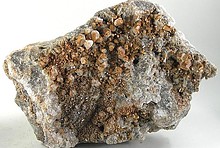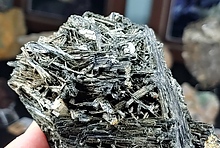Home PageAbout MindatThe Mindat ManualHistory of MindatCopyright StatusWho We AreContact UsAdvertise on Mindat
Donate to MindatCorporate SponsorshipSponsor a PageSponsored PagesMindat AdvertisersAdvertise on Mindat
Learning CenterWhat is a mineral?The most common minerals on earthInformation for EducatorsMindat ArticlesThe ElementsThe Rock H. Currier Digital LibraryGeologic Time
Minerals by PropertiesMinerals by ChemistryAdvanced Locality SearchRandom MineralRandom LocalitySearch by minIDLocalities Near MeSearch ArticlesSearch GlossaryMore Search Options
The Mindat ManualAdd a New PhotoRate PhotosLocality Edit ReportCoordinate Completion ReportAdd Glossary Item
Mining CompaniesStatisticsUsersMineral MuseumsClubs & OrganizationsMineral Shows & EventsThe Mindat DirectoryDevice SettingsThe Mineral Quiz
Photo SearchPhoto GalleriesSearch by ColorNew Photos TodayNew Photos YesterdayMembers' Photo GalleriesPast Photo of the Day GalleryPhotography
╳Discussions
💬 Home🔎 Search📅 LatestGroups
EducationOpen discussion area.Fakes & FraudsOpen discussion area.Field CollectingOpen discussion area.FossilsOpen discussion area.Gems and GemologyOpen discussion area.GeneralOpen discussion area.How to ContributeOpen discussion area.Identity HelpOpen discussion area.Improving Mindat.orgOpen discussion area.LocalitiesOpen discussion area.Lost and Stolen SpecimensOpen discussion area.MarketplaceOpen discussion area.MeteoritesOpen discussion area.Mindat ProductsOpen discussion area.Mineral ExchangesOpen discussion area.Mineral PhotographyOpen discussion area.Mineral ShowsOpen discussion area.Mineralogical ClassificationOpen discussion area.Mineralogy CourseOpen discussion area.MineralsOpen discussion area.Minerals and MuseumsOpen discussion area.PhotosOpen discussion area.Techniques for CollectorsOpen discussion area.The Rock H. Currier Digital LibraryOpen discussion area.UV MineralsOpen discussion area.Recent Images in Discussions
Identity HelpIdentification Help (Native Bismuth)

18th Jul 2012 19:41 UTCJoe Mork
18th Jul 2012 20:30 UTCRock Currier Expert
18th Jul 2012 20:33 UTCPeter Haas

20th Jul 2012 00:09 UTCJoe Mork
Color: Metallic, almost a silver-white. Under the view of a microscope 2 samples contained very small vugs or openings. Within those openings the walls were an iridescent/metallic color to that color of the Hopper Crystals (rainbow). Also as with the picture, 1 sample contained a blue hue while looking at it, however through a microscope that blue hue is accompanied with other colors resembling those colors of the Hopper Crystals (a rainbow tarnish if you will) as well.
Streak: Silver-white
Hardness: Between a 2 and 2.5
Cleavage: Perfect in one direction
Fracture: Uneven and jagged
Specific Gravity: Between a 9.7 and 9.8
Crystal System: Hexagonal, some in the small vugs or openings are almost branching
20th Jul 2012 01:49 UTCReiner Mielke Expert
20th Jul 2012 01:52 UTCPeter Haas
Thus, what you have appears to be bismuth. To be more conclusive, I need to see a picture, though.
EDIT:
A lamellar structure, if it is not particularly tight, also explains why you see "vugs" with crystalline structures in them. Thus, this observation does not necessarily mean that it is man-made.

20th Jul 2012 02:53 UTCJoe Mork
3 pictures are coming in 3 different attachments which includes this one because of their size

20th Jul 2012 02:56 UTCJoe Mork

20th Jul 2012 03:02 UTCJoe Mork
If you need better I will try again in the morning. I wish I could show you the vugs, but my microscope isn't capable of capturing images.
20th Jul 2012 11:53 UTCPavel Kartashov Manager

20th Jul 2012 15:05 UTCLefteris Rantos Expert
Lefteris.
20th Jul 2012 17:09 UTCUwe Kolitsch Manager

20th Jul 2012 19:10 UTCEvan Johnson
EMJ
20th Jul 2012 19:59 UTCDonald Slater

20th Jul 2012 20:13 UTCJoe Mork

20th Jul 2012 21:08 UTCEvan Johnson
21st Jul 2012 00:39 UTCReiner Mielke Expert

21st Jul 2012 02:20 UTCAlfredo Petrov Manager
22nd Jul 2012 18:42 UTCRob Woodside 🌟 Manager

22nd Jul 2012 18:59 UTCJoe Mork

22nd Jul 2012 19:14 UTCryan christensen
22nd Jul 2012 20:24 UTCRowan Lytle

22nd Jul 2012 22:04 UTCGeorge Creighton
Regards george
22nd Jul 2012 22:10 UTCReiner Mielke Expert
23rd Jul 2012 01:41 UTCJohn Lichtenberger
http://i3.photobucket.com/albums/y62/auplater/Bismuth1.jpg
auplater

23rd Jul 2012 02:38 UTCJoe Mork

23rd Jul 2012 04:48 UTCTim Jokela Jr
Genuine natural native bismuth, unlabelled, unboxed, in a jar with agates and amber???
Add the fact that it looks NOTHING like either native or manmade bismuth... and I collected semi-metals for a while, have seen lots...

23rd Jul 2012 07:50 UTCPhilip Perkins
& i'd say Bismuth has a light brassy color like is shown with John's specimen.
Yes Bismuth does crystallize, i once saw a specimen in combo with Quartz in the Queensland Mines Dept collection in Brisbane, many years ago.

23rd Jul 2012 13:52 UTCEvan Johnson

23rd Jul 2012 14:52 UTCJoe Mork
23rd Jul 2012 17:40 UTCReiner Mielke Expert

23rd Jul 2012 19:41 UTCEvan Johnson
26th Jul 2012 13:51 UTCSimone Citon Expert
Seriously, Joe, to me no man-made product of native elements (another morphology, generally more cleavaged), no crystallized natural Antimony or Bismuth (really in euhedral crystals too much rare), I see pentagonododecahedral crystals pale gray color with bluish iridescence on the surfaces and I'm thinking to the moroccoan Skutterudite. See you that
http://www.mindat.org/photo-41615.html
Before you come back on your test, there may be a link with moroccoan minerals? Maybe at the flea market there were other pieces, as Baryte, Vanadinite, Azurite / Malachite, Chalcedony, other Morocco material?

27th Jul 2012 07:14 UTCAnonymous User




Mindat.org is an outreach project of the Hudson Institute of Mineralogy, a 501(c)(3) not-for-profit organization.
Copyright © mindat.org and the Hudson Institute of Mineralogy 1993-2024, except where stated. Most political location boundaries are © OpenStreetMap contributors. Mindat.org relies on the contributions of thousands of members and supporters. Founded in 2000 by Jolyon Ralph.
Privacy Policy - Terms & Conditions - Contact Us / DMCA issues - Report a bug/vulnerability Current server date and time: April 16, 2024 12:23:16
Copyright © mindat.org and the Hudson Institute of Mineralogy 1993-2024, except where stated. Most political location boundaries are © OpenStreetMap contributors. Mindat.org relies on the contributions of thousands of members and supporters. Founded in 2000 by Jolyon Ralph.
Privacy Policy - Terms & Conditions - Contact Us / DMCA issues - Report a bug/vulnerability Current server date and time: April 16, 2024 12:23:16










